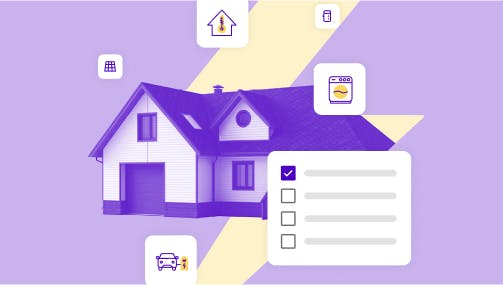FEDERAL RESIDENTIAL CLEAN ENERGY CREDIT (25D)
EXPIRES SOON!
Federal 25D battery storage tax credit
Act fast! This credit expires on Dec. 31, 2025.
The 25D Battery Storage Tax Credit is available to federal taxpayers who install home battery storage systems in their home. To qualify for the tax credit, you’ll need to complete your project by Dec. 31, 2025.
View other eligible projects under this tax credit:
Jump to section
Introduction
Introduction
Disclaimer: The information presented here is for educational purposes only. It is not intended to provide specific tax guidance. For questions regarding your individual tax situation, we suggest consulting with your tax advisor.
Tax Credit
30%
Use by Dec. 31, 2025
Who qualifies for the 25D battery storage tax credit?
This tax credit applies to everyone who pays federal income taxes.
No income requirements
There are no income limitations for the 25D Tax Credit. However, like nearly all federal tax credits, you must pay federal income taxes to qualify.
All US residents who live in their homes
The 25D tax credit can be applied to a new or existing home that is located in the United States. This means that, unlike 25C tax credits, a home that is under construction when you apply for the battery storage tax credit can qualify.
Renters are also eligible.
Additionally, you must live in the property at least part of the year. Landlords can never claim this credit for homes they rent out but do not use as a residence themselves.
Which battery storage options qualify?
Battery storage must have a capacity of 3 kilowatt-hours or greater. Labor costs associated with installation are also eligible for this tax credit.
In order to qualify for this tax credit, battery storage technology property must:
Be new and previously unused
Have a capacity of 3 kilowatt-hours or greater
Be installed and put to use in your home by Dec. 31, 2025.
Additionally, you can include labor costs associated with onsite preparation, assembly, or installation of your battery storage. Purchase and installation of piping and wiring required to connect new battery storage with your home may also qualify for this tax credit.
If you aren’t sure which battery storage options qualify, talk to your contractor. They’ll help you select technology and associated equipment that can qualify for the 25D tax credit.
How to apply for the battery storage tax credit
Purchase and install your home battery storage system by the end-of-year deadline. Fill out IRS Tax Form 5695 and submit it with your federal tax return.
Purchase and install your home battery storage by Dec. 31, 2025.
Document all expenses associated with the purchase, preparation, assembly, and installation of your home battery storage. Save receipts and invoices or contact your contractor to obtain copies.
Fill out IRS Form 5695, Residential Energy Credits. For instructions on how to fill out the form, including more in-depth information about individual amounts you can claim, see the IRS’s Instructions for Form 5695.
Submit the form along with your annual tax return.
You may enjoy a lower tax bill or bigger refund!
Keep in mind that you can only apply for and claim the 25D tax credit for the year new battery storage is installed in your home. Here’s what we mean: if you purchased your equipment in late 2024 but don’t have it installed until 2025, you have to file the tax credit with your 2025 tax return.
Discover other incentives with the incentives calculator!
There are other incentives that you may qualify for. Our incentive calculator will show you a personalized list of incentives.
Go to Incentive CalculatorHelpful tools

Personal Electrification Planner
Interested in upgrading your home to all-electric appliances and vehicles? Generate a personalized electrification plan based on your particular home, lifestyle, and priorities — all in just a few minutes.

Incentive Calculator
Find out how much you could save with tax credits and rebates for heat pumps, water heaters, electric vehicles, electric stoves, rooftop solar, wiring upgrades, and energy efficiency improvements to your home.

Home battery storage
When paired with rooftop solar, home battery storage can keep your home powered during outages and help you save money during peak hours for electricity.